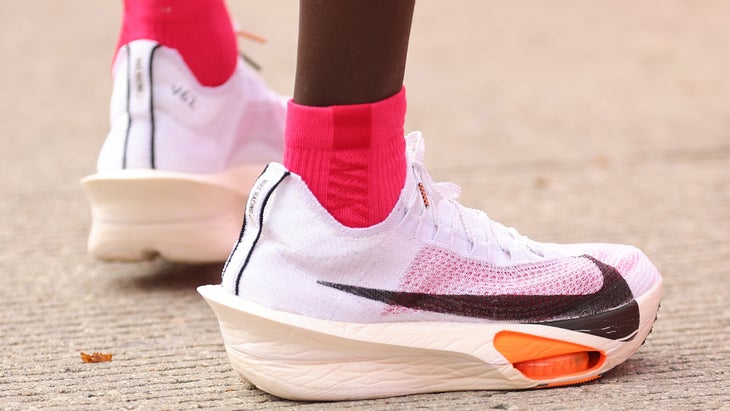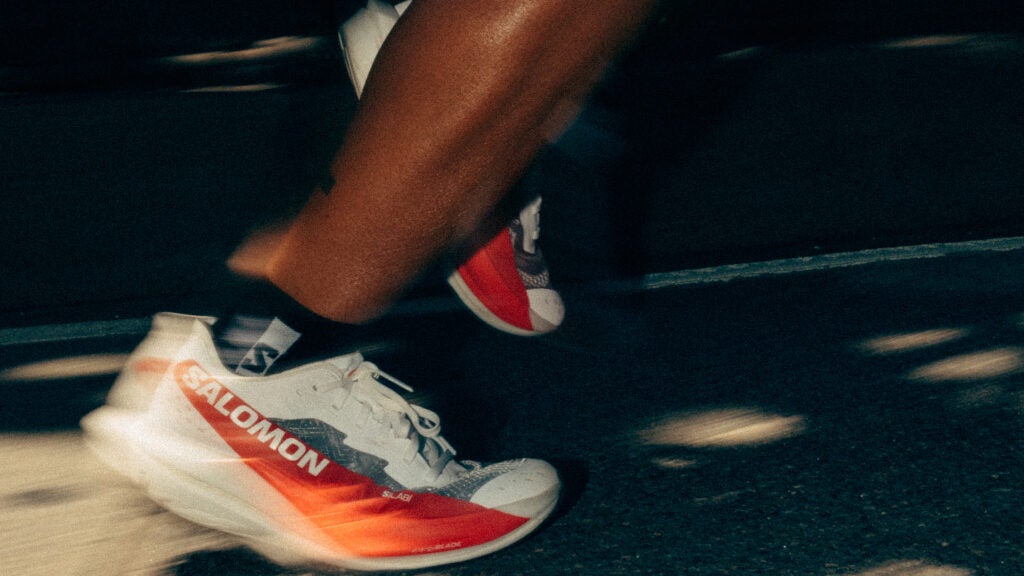No products in the cart.
Outdoor Adventure
Do You Actually Need a Super Shoe to Run Your Best?
New perk: Easily find new routes and hidden gems, upcoming running events, and more near you. Your weekly Local Running Newsletter has everything you need to lace up!
Subscribe today →.
I’m getting ready for my first marathon in the fall, and I am trying to dial in my kit. I keep hearing about these “super shoes” people use for racing, but they’re expensive, and I don’t know if I should switch to something new for race day. Do I need to buy a super shoe to run my best? —Newbie Distance Runner
Dear Newbie,
Super shoes are no doubt attractive. The lightweight racers with ultra-bouncy foam and embedded carbon plates have been shown to enable some athletes to reach higher speeds with less effort.
Could a super shoe help you run slightly faster and easier than you would in a standard trainer or racer? Yes. Probably. Maybe. It’s complicated.

If you’re a sub-seven-minute-mile marathoner, you’ve established serious training habits and built a strong, athletic stride. And in that pace range, the research says you’ll likely get a 3 or 4 percent improvement in running economy from the shoes. This is why no elite runner would toe the line in anything but a super shoe.
But as a first-time marathoner, do you need that edge? Will it be impossible for you to accomplish your goals without these shoes’ performance-enhancing benefits? No, absolutely not. And there are some good reasons why you might not want to invest in a super shoe.
Research on the benefits for slower runners is mixed. One data analysis of slower marathoners showed time improvements—even greater than among faster runners—after adopting super shoes. In contrast, a controlled study revealed that the slower the runner, the lower the boost in running economy, with 9:40-mile runners seeing only about 1 percent improvement.
Still, any help is appreciated in the marathon, and some experts believe that the real advantage may have more to do with the shoes’ ability to reduce muscle breakdown and fatigue than with improvements in efficiency. If super shoes make finishing strong more likely, they might be worth the $250-plus price tag.
Be aware, however, that nearly a third of the slower runners in the same study showed a decrease in running economy—the shoes made running harder, not easier. Other studies have found even greater variability in runner response.
This is partially due to the fine-tuned bounce and roll of a super shoe’s midsole and plate. Every runner’s stride is unique and interacts with the shoe differently. When we staged a super-shoe showdown for Outside Online—with three runners comparing 16 different super shoes head-to-head—we found that a shoe that felt magical to one runner often went clunk on another.
Even if a shoe seems good when you are fresh and running strong, it might not be what you want on your foot when you start to tire. Super shoes exacerbate any stride imbalances because of a trampoline-like action that magnifies all forces and movements, for better or worse. Can you maintain the even posture and powerful push-off that a super shoe requires over 26.2 miles? A tall, wobbly platform isn’t what anyone wants when doing the marathon shuffle. For slower, first-time marathoners, the risk of a super shoe impeding their efforts may not be worth the meager potential reward, especially at these prices.
If you decide to go with a super shoe, be sure to test out multiple models to find one that enhances your natural gait rather than changing it or, worse, fighting against it.
Regardless of what you choose for race day, remember that the first rule of marathoning is to dance with the one who brought you: if in doubt, go with old friends—your favorite tried-and-true trainers. Nothing different. Nothing new. Any change opens you up to the possibility of blisters, an altered stride that causes you to fatigue faster, even injury. If you want to wear a specialty shoe, start using it far enough in advance that you’ve adapted to it by race day. Gradually add miles over eight to twelve weeks, building up to several solid marathon-pace runs and at least one long run.
Marathon success depends far more on factors like how well you trained, how well you hydrate and fuel, and how the weather gods treat you than on which shoes you wear. In the end, the best shoes are the ones that get out of the way and quietly let your fitness shine.
Have a question of your own? Send it to us at deargear@outsideinc.com.
Source link

